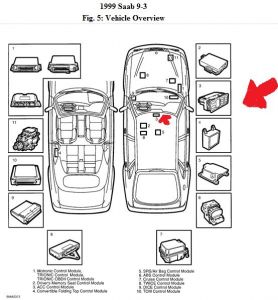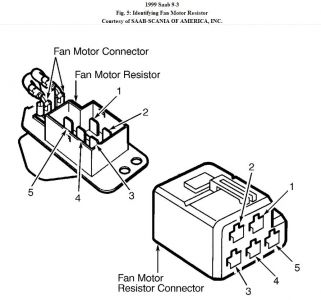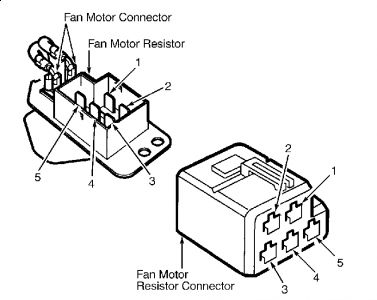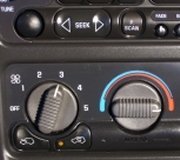Hello .. thanks for the donation .. much appreciated
I would check for fault codes before replacing this expensive control module.. it could be a fault on the speed control unit ?
RETRIEVING DIAGNOSTIC TROUBLE CODES
During ACC control module calibration any stored and/or detected DTCs will be displayed in place of temperature. A number from 0-23 will be displayed for approximately 3 seconds each. Fan speed bars are used to indicate the number of DTCs stored. A maximum of 6 DTCs can be stored at any time. See ACC CONTROL MODULE DTCs.
Connect Saab Tech 2 or OBD-II compliant scan tool to Data Link Connector (DLC). DLC is located under instrument panel, below steering column. Turn ignition on. Following scan tool manufacturer's instructions, read and note DTCs. See ACC CONTROL MODULE DTCs and DICE CONTROL MODULE DTCs tables.
Because a functional problem in one system can be caused from a problem in another system it is important to read DTCs from all vehicle systems. Compare DTCs with customer complaint. DTC that most closely corresponds with customer complaint is probably caused by primary malfunction.
CONTROL MODULES
Manufacturer has found many control modules that have been replaced were not the cause of the problem and replacement of the control module did not correct the problem. Upon examination, these control modules were found to be free of defects. Before replacing a suspect control module, preform the following:
Before replacing ACC control module, ensure that all user-programming has been cleared. See ACC CONTROL MODULE PROGRAMMING under PROGRAMMING.
DTC B2425: FAN BLOWER MOTOR CONTROL VOLTAGE
Fault Symptoms
Fan blower motor cannot be operated from ACC control panel.
Fault Conditions
A DTC will set if a short to ground or battery voltage is detected.
Diagnostic Procedure
Disconnect fan blower motor control module 8-pin connector located on right side of climate control unit. See Fig. 2. Measure voltage between ground and fan blower motor control module 8-pin connector terminal No. 8 (Gray/Red wire). Turn ignition on. Using fan blower motor speed control buttons on ACC control panel, increase blower motor speed in steps. If voltage is 0.0-5.0 volts in short steps from minimum to maximum blower motor speed, replace blower motor control module. If voltage is not as specified, repair open or short in Gray/Red wire between fan blower motor control module and ACC control module 39-pin connector terminal No. 14. See Fig. 4. See WIRING DIAGRAMS. When repairs are completed, go to next step.
Using scan tool, clear all DTCs from all systems. Recheck A/C system operation for original complaint. If A/C system is operating properly and no DTC has been detected, repair is complete. If a DTC has been detected, a control module may need to be replaced. See CONTROL MODULES under TESTING.
FAN BLOWER MOTOR SPEED CONTROL UNIT
Removal & Installation
NOTE:DO NOT use aluminum spacer supplied with fan blower motor speed control unit.
Remove glove box. Remove trim panel from right side of center console. Remove floor air duct. Remove fan speed control unit protective cover. Remove fan speed control unit retaining screws and control unit. See Fig. 2. Disconnect wiring harness from unit.
To install, reverse removal procedure. Remove old silicon paste from control module contact surface on climate control unit. Apply a thin coating of Silicon Paste (30 07 895) to fan speed control unit mounting surface. Install fan speed control unit ensuring that both sleeves are inserted into climate control unit holes. Calibrate ACC control module. See ACC CONTROL MODULE CALIBRATION under PROGRAMMING.
ACC Control Module..Under radio.

Removal & Installation
Carefully pry out push buttons located directly below the ACC control module. Carefully press out ACC control module from behind. Disconnect wiring harness from ACC control module. To install, reverse removal procedure. Calibrate ACC control module. See ACC CONTROL MODULE CALIBRATION under PROGRAMMING.
Hope this helps

Sunday, April 25th, 2010 AT 5:08 PM






